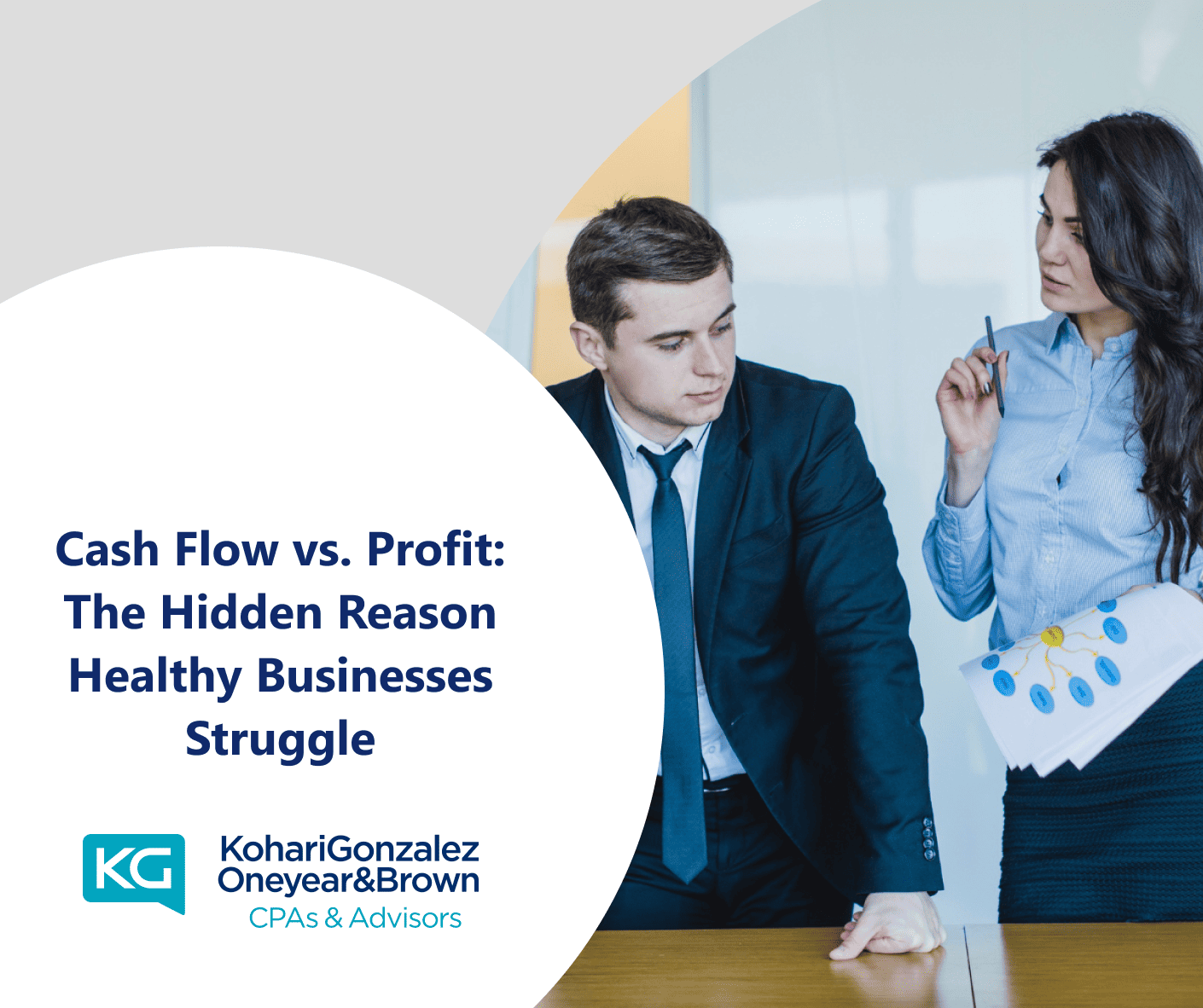When a “Good Year” Still Feels Tight
You finally have a year where sales are up and the books show a profit, but your bank account seems like it missed the memo. You're working harder than ever, but money seems to disappear as soon as it touches your account.
If this sounds familiar, you are not doing anything wrong; you are simply encountering one of the most typical business challenges: mistaking profit with cash flow.
Profit informs you how your business appears on paper.
Cash flow reflects how your firm operates in real life.
And while both are important, only one pays the bills.
The Real-World Disconnect
Here is where the confusion usually begins:
In December, you send an invoice to a client for $20,000. On your profit and loss account, that sale increases your year-end total. However, if the client does not pay until February, the profit is insufficient to cover January's rent, wages, and taxes.
Consider a landscaping company that invests $15,000 in equipment each spring to prepare for summer jobs. On paper, the expense appears to be stretched out over time, yet it actually leaves your account now.
What was the result? You are profitable on paper but cash-strapped in practice.
Why This Happens to So Many Business Owners
Cash flow problems aren't always the result of failure; they're often a natural component of growth. As your company grows, so do your expenses, payment cycles, and time gaps between money in and money out.
The major triggers include:
- Delayed payments: Clients pay on their own schedule, not yours.
- Seasonal swings: Fixed costs remain in place during slow months.
- Inventory or supply purchases: You pay now and earn later.
- Tax surprises: Profit may be taxable before it is received.
Even healthy organizations can feel like they're running out of time if they don't plan for those gaps.
Turning Chaos Into Control
Working with a reputable financial adviser can be really beneficial in this situation. They can help you:
- Forecast cash flow so you can identify slowdowns before they occur.
- To smooth out seasonality, establish cash buffers during boom months.
- Review expenses carefully to ensure that growth does not exceed available cash.
Even basic efforts, such as synchronizing invoicing and bill-paying dates or allocating a portion of each payment for future needs, can significantly reduce stress and increase stability.
Bottom Line
Profit is your scoreboard. Cash flow is equivalent to oxygen.
You need both to survive and prosper.
You are not alone if your firm appears prosperous on paper but is struggling financially. Contact our firm immediately for assistance in developing a cash flow plan that will keep your business running smoothly throughout the seasons.




